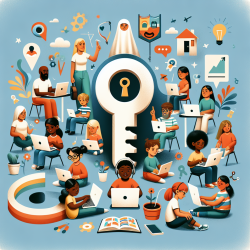Understanding Employee Identifications
The study identifies several key forms of identification within an organization:- Organizational Identification: How employees identify with the organization as a whole.
- Sub-organizational Identification: Identification with specific departments or units within the organization.
- Group Identification: Identification with workgroups or teams.
- Micro-group Identification: Identification with informal subgroups within teams.
- Interpersonal Identification: Identification with individual colleagues or supervisors.
- Personal Identification: How employees see themselves as unique individuals within the organization.
Implementing Research Outcomes
The research highlights the relative strength and impact of these identifications. Notably, micro-group identification was found to be the strongest, while personal identification was the weakest. Here are some practical steps for practitioners to leverage these findings:Foster Strong Micro-group Identifications
Encourage the formation of informal subgroups within teams. These subgroups can create a sense of belonging and trust among members, which can enhance collaboration and productivity. For online therapy services, this might involve creating smaller, focused groups of therapists who regularly interact and support each other.Enhance Organizational Identification
Strengthen employees' identification with the organization by promoting its mission, values, and achievements. Regularly communicate the organization's goals and successes to all employees, ensuring they feel part of a larger purpose.Balance Cognitive and Affective Dimensions
The study found that the affective dimension (emotional connection) of identification tends to be stronger than the cognitive dimension (rational understanding) in most forms of identification. Practitioners should strive to balance these dimensions by:- Creating emotionally engaging experiences and connections within the organization.
- Providing clear, rational explanations of organizational goals and processes.
Encouraging Further Research
Practitioners should not stop at implementing these findings but should also encourage further research into the specific dynamics of their organizations. By understanding the unique characteristics of their teams and organizational structure, they can tailor strategies to enhance employee identification effectively.Conclusion
By understanding and leveraging the various forms of employee identification, practitioners in online therapy services can create a more cohesive, motivated, and productive workforce. Implementing the insights from the research on multiple identifications can lead to significant improvements in organizational effectiveness and employee satisfaction.To read the original research paper, please follow this link: Multiple Identifications of Employees in an Organization: Salience and Relationships of Foci and Dimensions.










